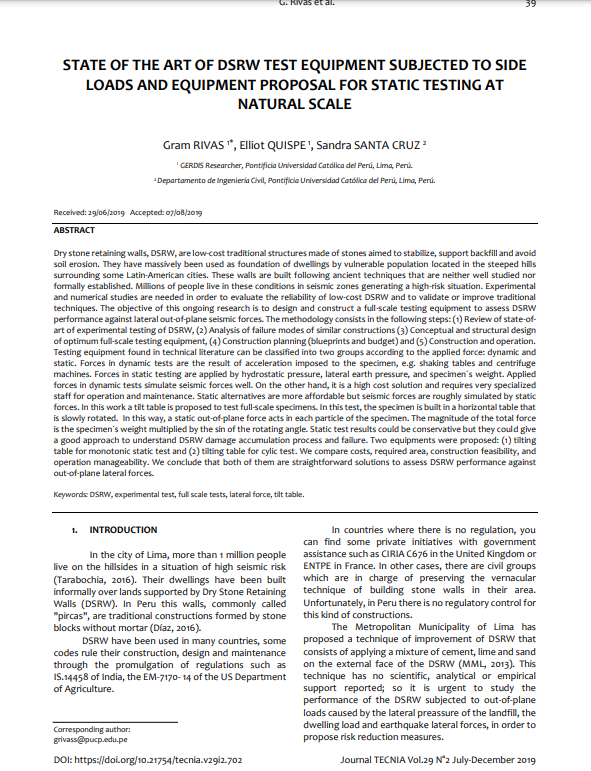State of the art of DSRW test equipment subjected to side loads and equipment proposal for static testing at natural scale
Licencia: Creative Commons (by)
Autor(es): Rivas, Gram; [et al.]
Dry Stone retaining walls, DSRW, are low-cost traditional structures made of stones aimed to stabilize, support backfill and avoid soil erosion. They have massively been used as foundation of dwellings by vulnerable population located in the steeped hills surrounding some Latin-American cities. These walls are built following ancient techniques that are neither well studied nor formally established. Millions of people live in these conditions in seismic zones generating a high-risk situation. Experimental and numerical studies are needed in order to evaluate the reliability of low-cost DSRW and to validate or improve traditional techniques. The objective of this ongoing research is to design and construct a full-scale testing equipment to assess DSRW performance against lateral out-of-plane seismic forces. The methodology consists in the following steps: (1) Review of state-of-art of experimental testing of DSRW, (2) Analysis of failure modes of similar constructions (3) Conceptual and structural design of optimum full-scale testing equipment, (4) Construction planning (blueprints and budget) and (5) Construction and operation. Testing equipment found in technical literature can be classified into two groups according to the applied force: dynamic and static. Forces in dynamic tests are the result of acceleration imposed to the specimen, e.g. shaking tables and centrifuge machines. Forces in static testing are applied by hydrostatic pressure, lateral earth pressure, and specimen´s weight. Applied forces in dynamic tests simulate seismic forces well. On the other hand, it is a high cost solution and requires very specialized staff for operation and maintenance. Static alternatives are more affordable but seismic forces are roughly simulated by static forces. In this work a tilt table is proposed to test full-scale specimens. In this test, the specimen is built in a horizontal table that is slowly rotated. In this way, a static out-of-plane force acts in each particle of the specimen.
[Lima: 2019]
Compartir:
Una vez que el usuario haya visto al menos un documento, este fragmento será visible.


